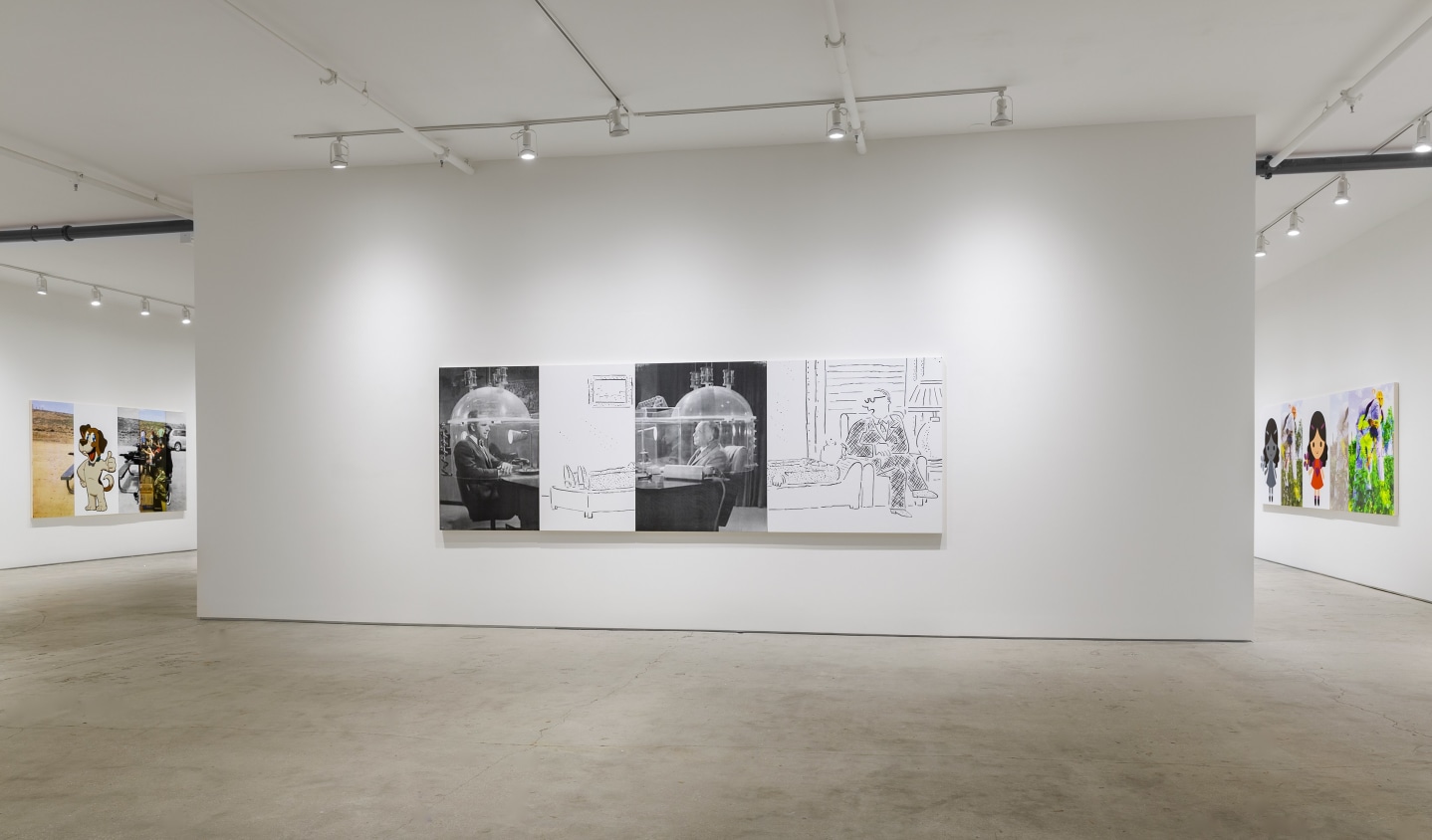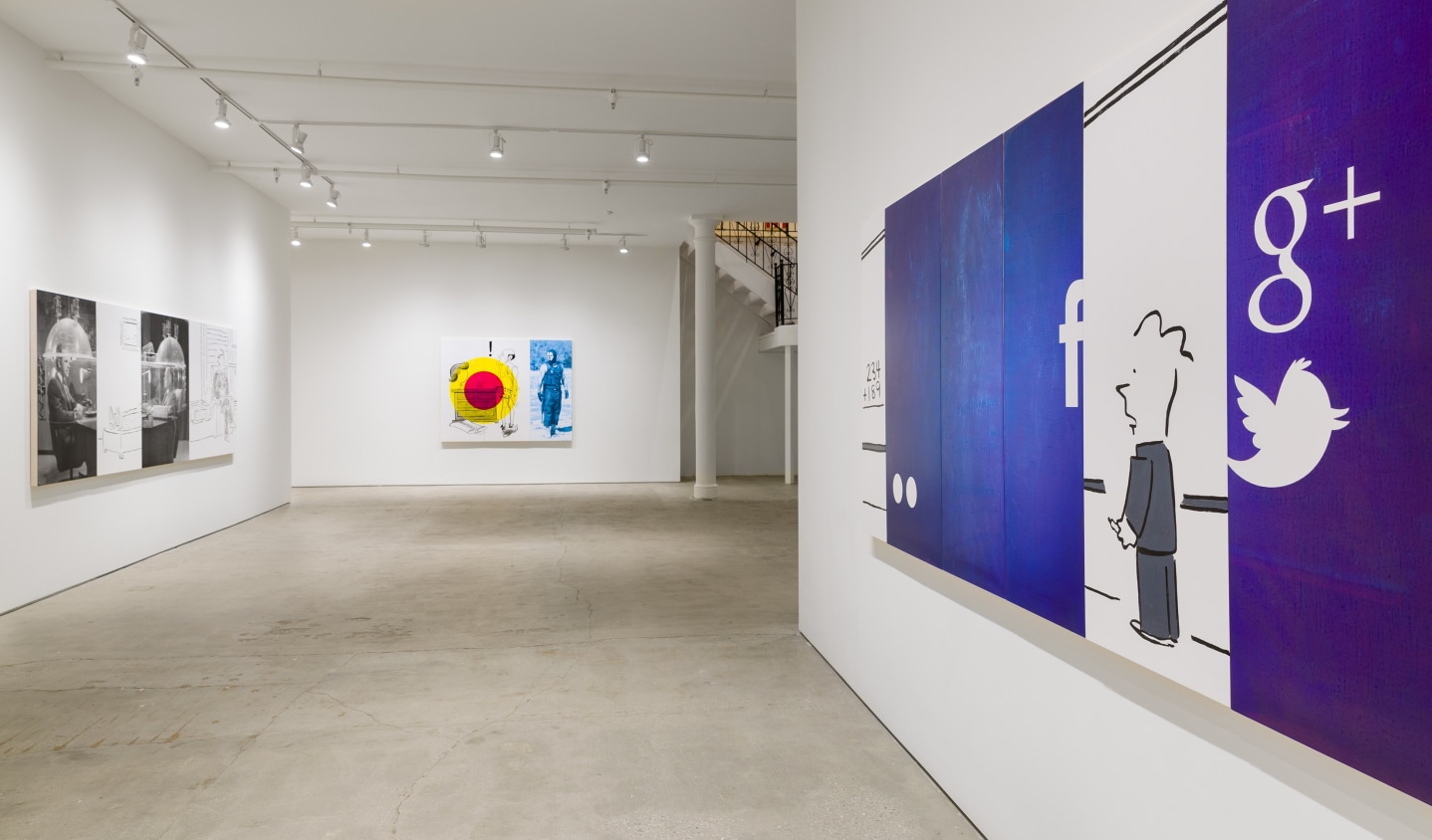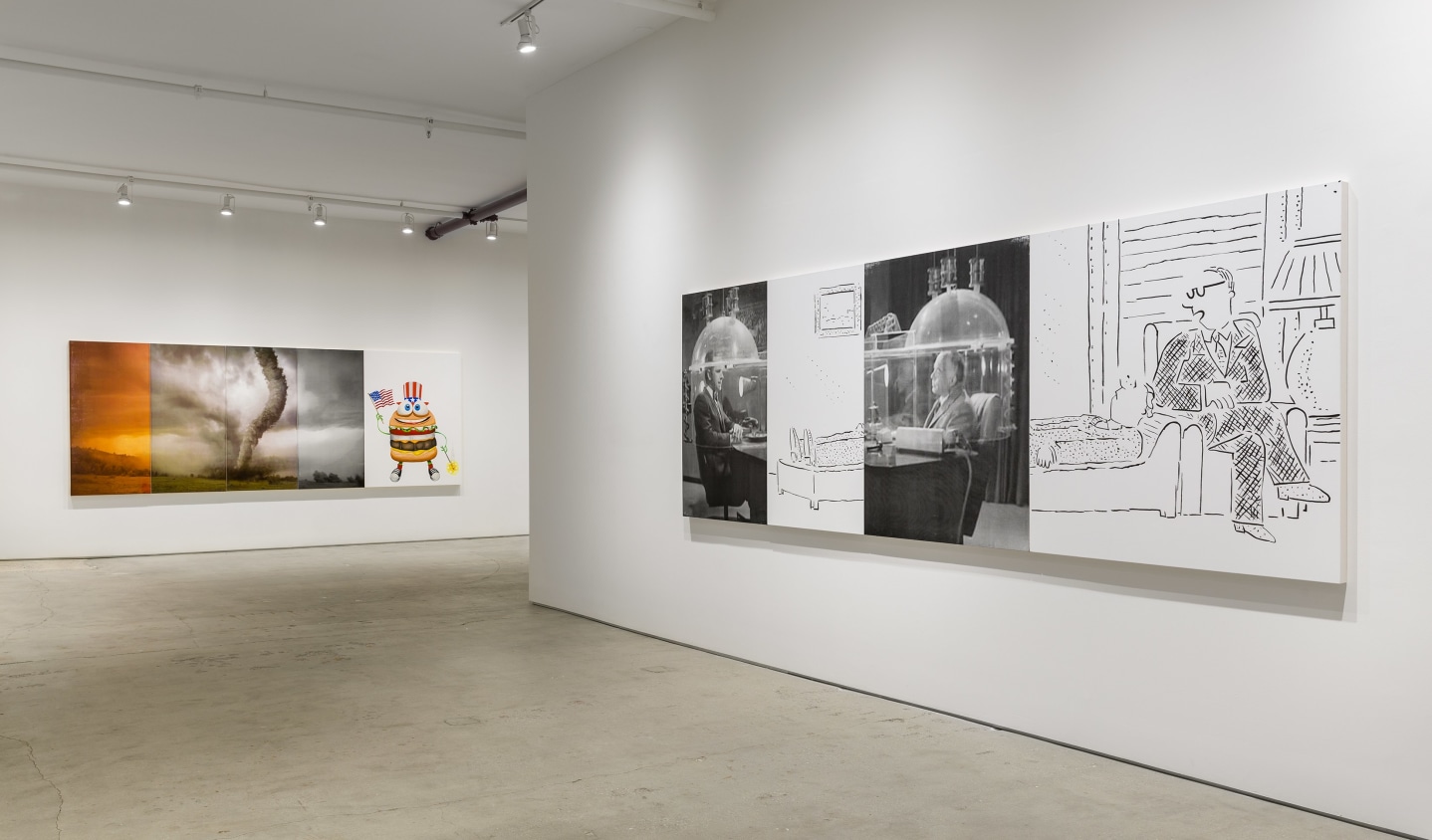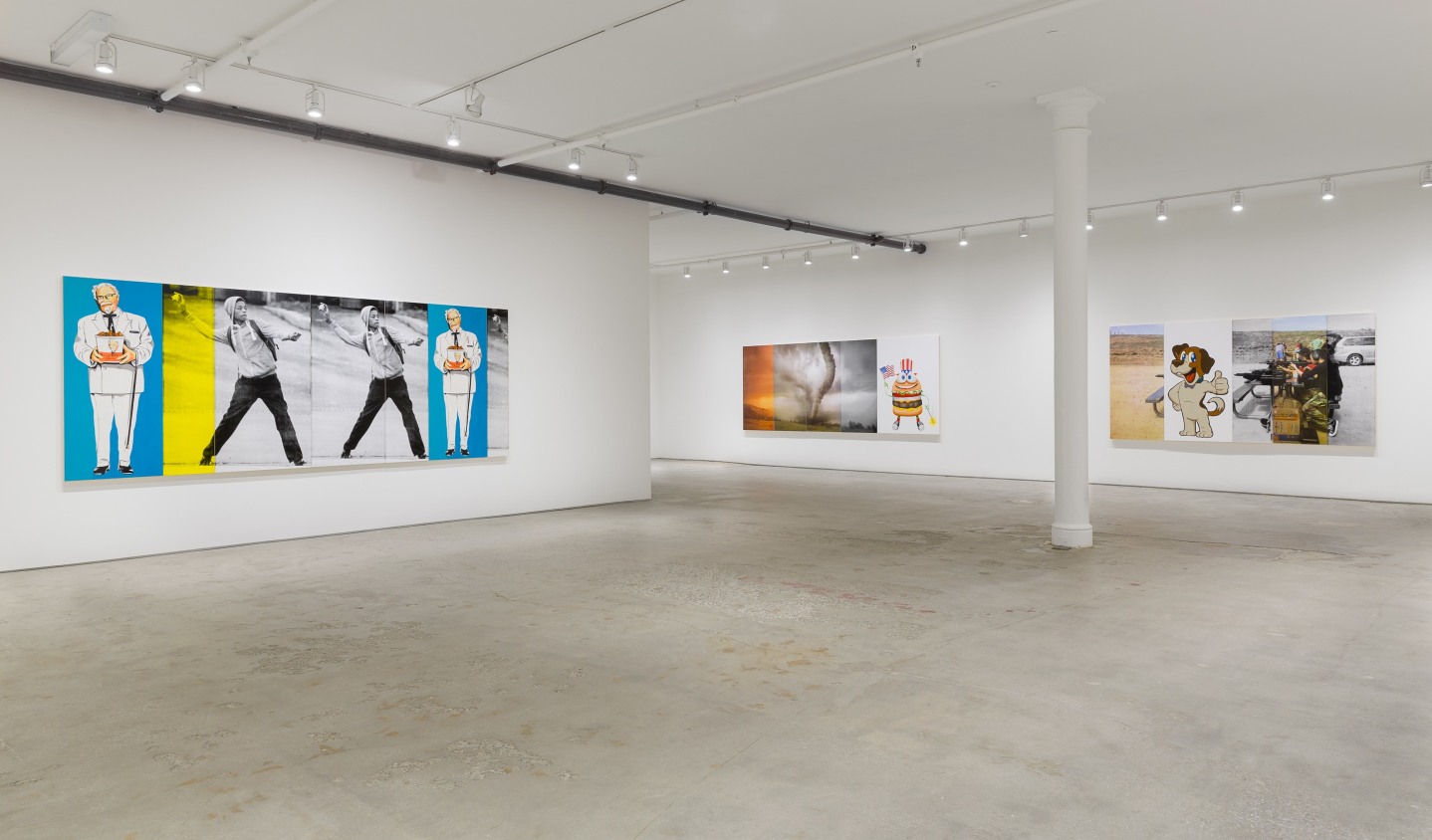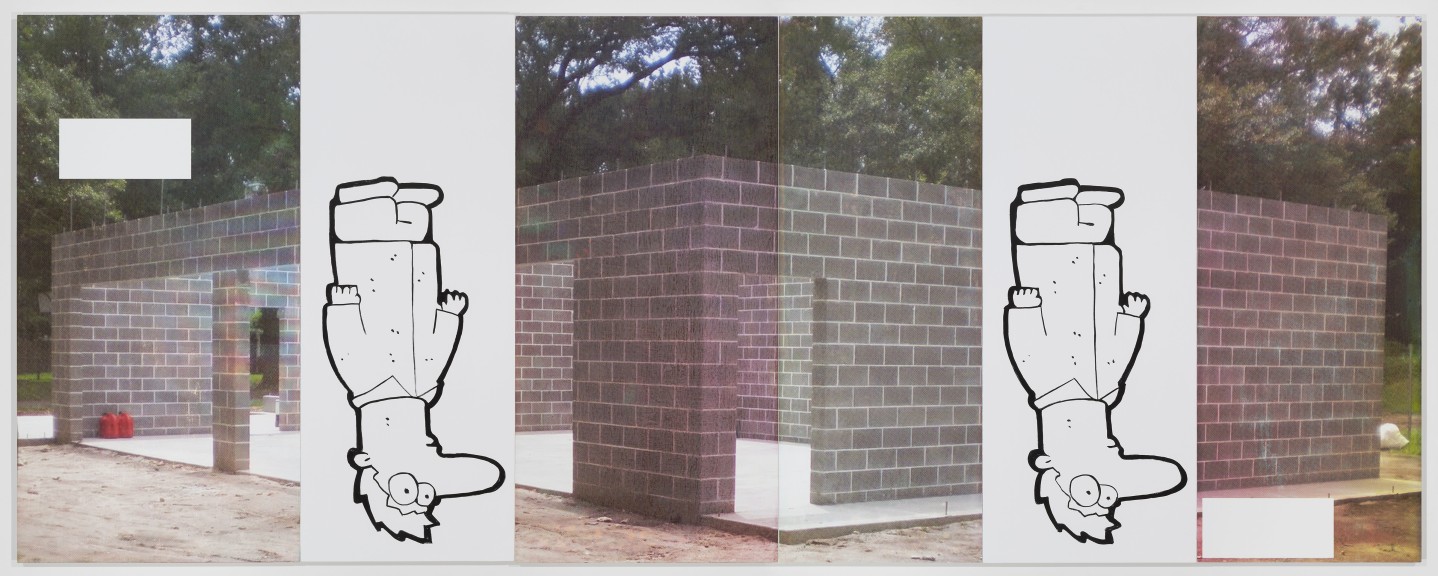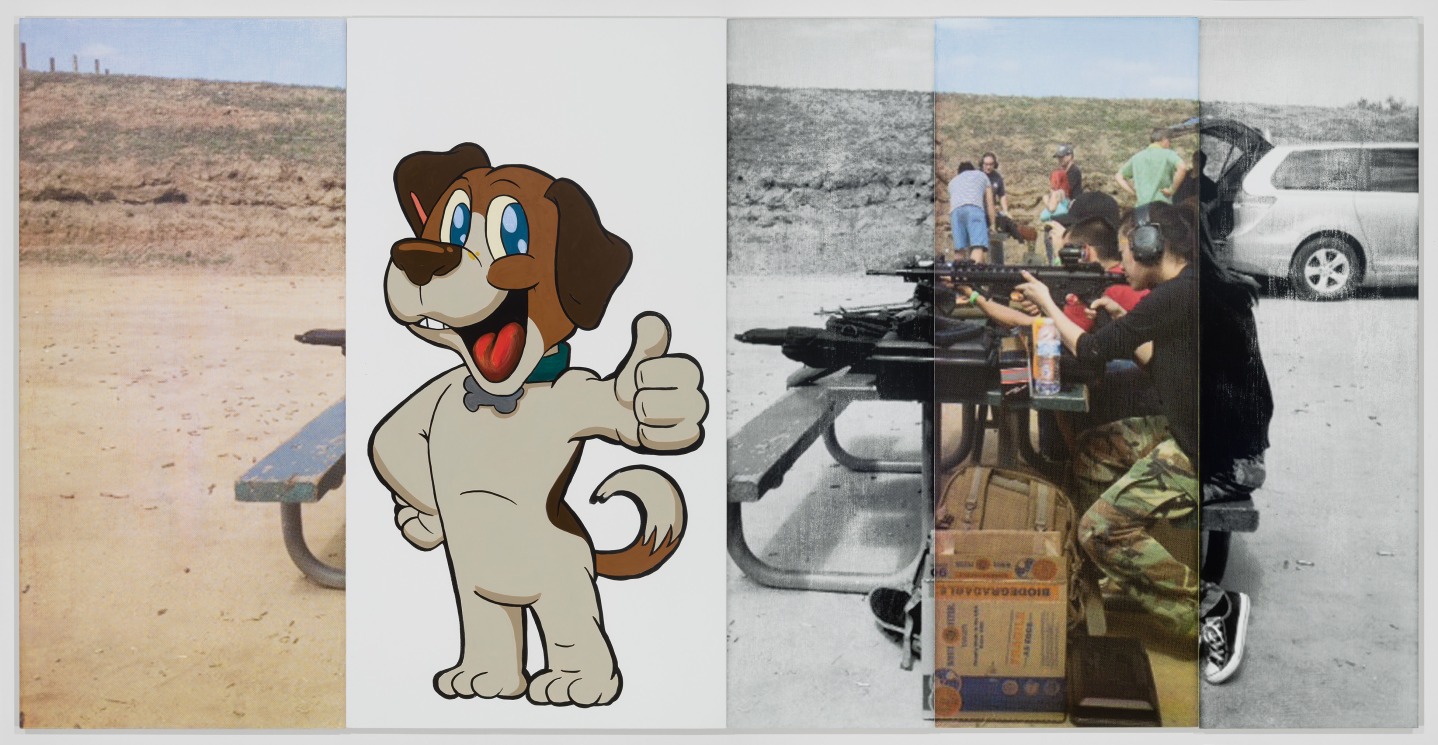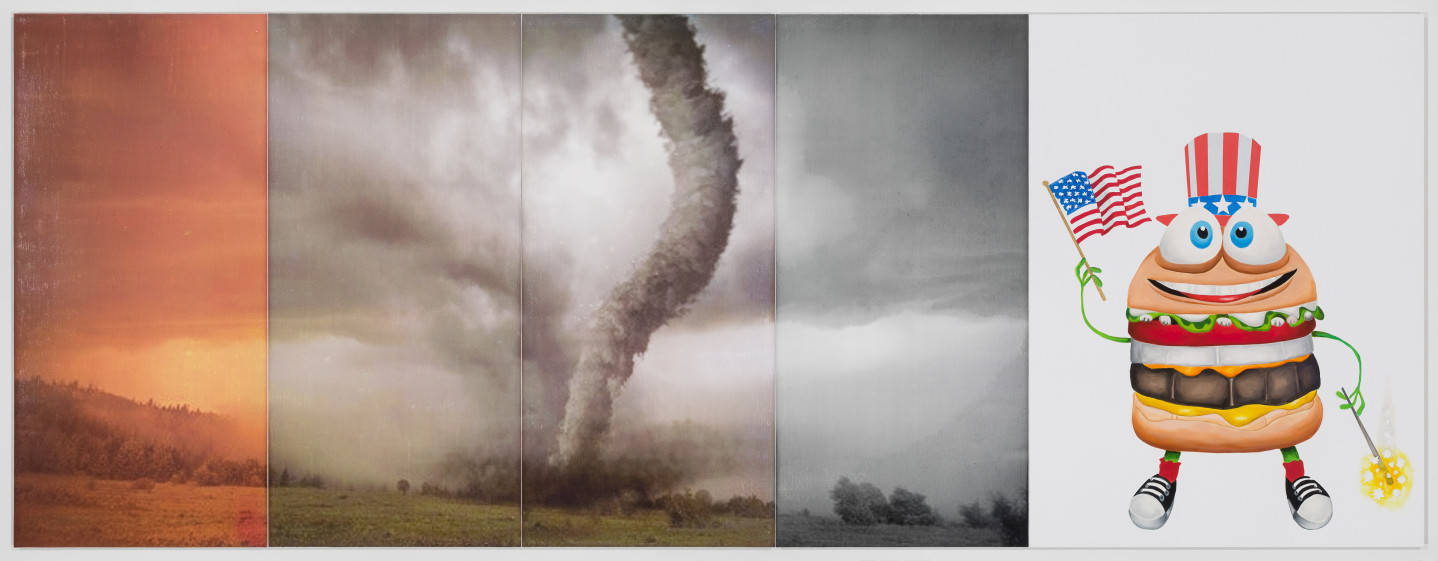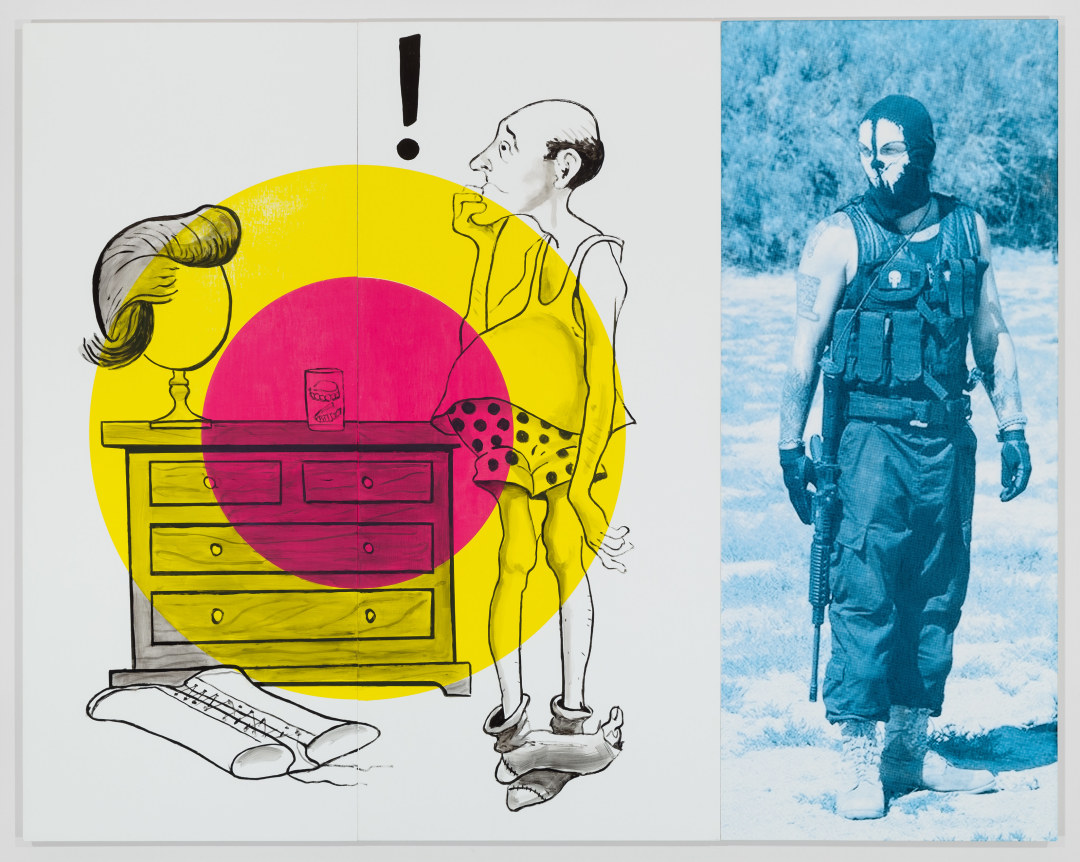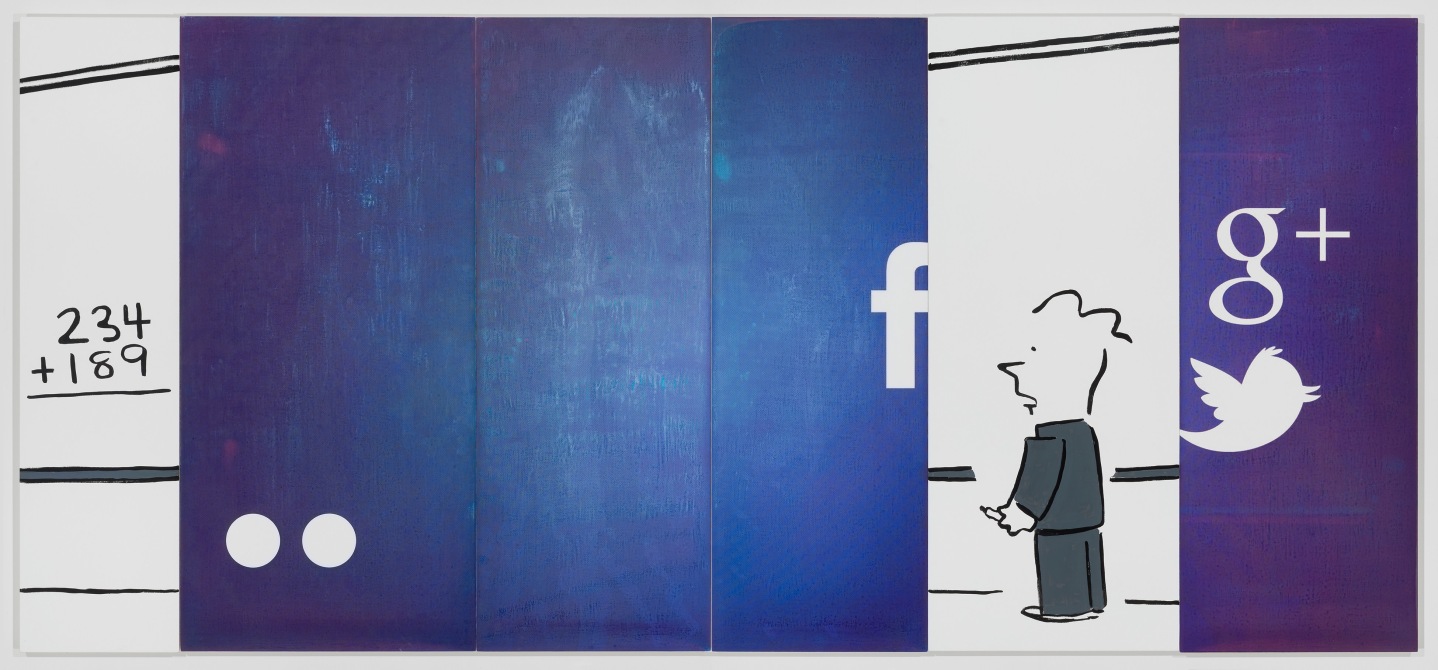FOR IMMEDIATE RELEASE
Julia Wachtel : Displacement
November 11, 2017 - January 20th, 2018
Elizabeth Dee is pleased to present the highly anticipated exhibition of Julia Wachtel’s latest work, Displacement. This exhibition, occupying the ground floor of the gallery, is the largest exhibition in New York to date by the artist, known for her impactful paintings that address the power and social politic of the American landscape. Displacement introduces ten epic paintings that address the implication of urgent, radical viewpoints from digital and print sources that reflect the nation’s current political and larger global psyche. Opening precisely one year after the election of Donald Trump, this is the first complete body of work by the artist to address the significant shifts of our time.
This fully conceived monographic exhibition takes a sweeping, wide angle view of the post-truth, zero sum ideology so profoundly impacting our society. The “post-truth” American landscape can be applied to all of the ten works in the exhibition and continues as a central theme for the artist. A spectrum of topics as diverse as: the marketability of “fake news” by the alt-right, the question of the citizen in relation to the dispossessed, tech’s monopoly in global business and social media, financial hacking, political interference, the Republican conservative agenda, the Second Amendment, global warming, entertainment and television, racism and the sexist backlash are all topics or related departure points presented in these paintings. In confronting this, the paintings in this exhibition meditate on the collective trauma in many forms, and engage in a call to action.
The exhibition begins with a major work entitled Communication. Alluding to the core meaning juxtaposed in Wachtel’s identifiable appropriations are two images cropped and interspersed, one from the 60s television show “Get Smart” (1965-1970) and the other an image of a psychologist on a couch of a New Yorker cartoon by Robert Mankoff (creator of the therapy cartoon). The essence of the joke is that the apparatus, designed for secret conversations, makes it impossible for those inside the device - and easy for those outside the device - to hear the conversation. The end result is neither secret, nor communication. The range of isolation, and the notion of the self (and other), as well as the therapy/patient relationship, surmise and simultaneously address the implication of the individual over the collective, through systematic isolation that dates back to the beginning of the Cold War. The content’s context is a remarkable study in how American ideals since the 1950s Roy Cohn era, have been evolving for decades and breeding new divisive leadership that supports a radical agenda around the individual state.
The Space Complexity of an Algorithm depicts the logos of Facebook, Google and Twitter on a computer screen. The blue monochrome screen becomes a simulacrum of the surface of the painting, and that surface by default is a picture of a screen. With the simplicity of the composition and clarity of the branding, a complex engagement between the transparency of the screen and the opaqueness of the operational understructure is facilitated. The gap between the user and the motives of targeted marketing, profiling, financial hacking and political interference becomes personified in the cartoon inserted into the screen space. He is seemingly struggling to resolve a basic mathematical equation.
Target meditates on the heavily armed population of the US and the ideological and political ramifications of gun control. Two images deliberate side by side in equal balance. A Texas militia member is wearing a Mexican death mask as he possibly patrols the border. The cartoon image is from a vintage greeting card, with the cover of a cocky man in a suit wearing a button that says, “I Am The Greatest.” The inside image, the one depicted in the painting, is of the business man stripped of his virility; he has a pot belly, a bald head with a wig, bulging stomach and girdle, and his false teeth are in a glass. Two concentric circles turn him into a target.
Investigation addresses the TV news, specifically Fox, which remains the dominant platform for the Trump propaganda, the Republican conservative agenda and alt-right political ideology. Wachtel states “I was attracted to this image by the absurdity of the image of a woman jumping rope in a TV studio with the information scrolling at the bottom of the screen about a Pentagon investigation. It wasn’t until after I decided to use it that I even realized that it was Gretchen Carlson, one of the women to accuse Roger Ailes of sexual abuse, resulting in his ultimate take down.” The white bar in the image is a device meant to act as an irritant to the image, in contrast to the cartoon of a girl whose body mimics the jump-roping newscaster. A disconnection between image and words is an example of the surrealist logic inherent in television editing.
Stone depicts a screenprinted image of a young black man throwing a stone in protest. This is juxtaposed with an image of the newly updated mascot for Kentucky Fried Chicken, Colonel Sanders. The two clashing images pit the young man seeking racial justice against a corporate image that conjures up a deep and complicated history of racist stereotypes and corporate marketing strategies. With his stone, the young man stands as a David against this Goliath of combined forces.
The Disappearance of the Sign started with the cartoon image, which is clip art from the Internet, in contrast to the Old Milwaukee logo, which is a screengrab from a fake Old Milwaukee commercial. The entire composition, much of it white or white transparent, is a send-up of what is considered “white trash” behavior, and misogyny. The protagonist in the painting is in white underwear in front of a white trailer, in what looks like a rural American landscape. The stick figure with a broken leg, looks troubled or unhappy at this “broken” scene, implicating the viewer’s emotional reaction to the symbol of rural white America’s “dispossessed” mentality and attitudes, expressed in brands and behaviors.
Picnic is true to the poetics Wachtel employs in her unique format of landscape painting. As in much of Wachtel’s work, this painting deals with class. Picnic shows an American family scene that depicts the ubiquitousness of semi-automatic weapons in average peoples’ lives. Kids at the picnic table in Converse All Stars sneakers, adults unpacking the mini van in the background. Dogs here stand in for the family pet.
Mapping deals with technological agriculture, rampant pesticide use and the migrant worker. The screen-printed image is a Shutterstock stock photo of an agricultural worker in a hazmat suit applying pesticides. The artist distorts the image as a GMO, a parallel mutation created through Photoshop algorithms. The color distortions created a new mapping of the image that already included the mapping of the Shutterstock corporation watermarked within the digital fabric of the image itself. The cartoon figure is repeated once in color and once as a black and white version, alluding to issues of race and visibility in the equation of the agricultural corporation system. Titled Mapping, it’s a poetic representation of the earth’s surface that refers to the painting’s content, maps of real places, computer graphics, and gene mapping all in one image.
Sunday Afternoon addresses the environment and climate change and the title references the Seurat painting A Sunday Afternoon on the Island of La Grande Jatte. Referring also to the tornado in The Wizard of Oz it harkens back to a more innocent time, before tornadoes became a frequent sight due to global warming. Wachtel states, “I like the narrative aspect of A Sunday Afternoon, which is evocative of a happy, relaxed day. In light of the lurking threat of the tornado, the title for me has a kind of horror story innocence that we as viewers know to be false.”
Making History in many ways returns to the core of Wachtel’s work which emerged in the 1980s during the rise of TV, entertainment and celebrity culture which she was one of the first American artists to depict it from this generative perspective. The image is from the popular TV show Dancing with the Stars. The talent, is harvested primarily from other TV shows, from sports and now also from politics (Rick Perry was a contestant and Sean Spicer was recently vetted). In contrast is a cartoon image of a “hippie.” The Hippie became an idea that was marketed in multiple ways, but represents “real” people, engaged in ideas, political positions and lifestyle choices. The painting is a perfect hybrid disconnected from any ground level or “real” culture.
Julia Wachtel (American b. 1956) recently had a solo survey at the Cleveland Museum of Art, with an accompanying publication by Yale University Press. This year, she participated in Fast Forward: Painting from the 1980s at the Whitney Museum of American Art, New York. Upcoming exhibitions in 2018 include Brand New: Art and Commodity 1979-1989 at the Hirshhorn Museum in Washington D.C.
For more information, please contact the gallery at +1.212.924.7545 or Florence Lynch at florence@elizabethdee.com

